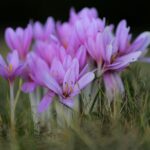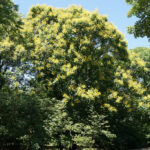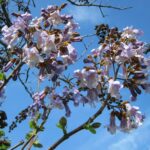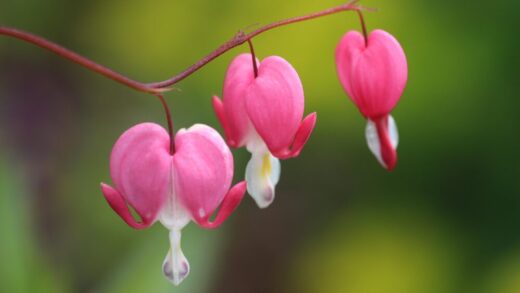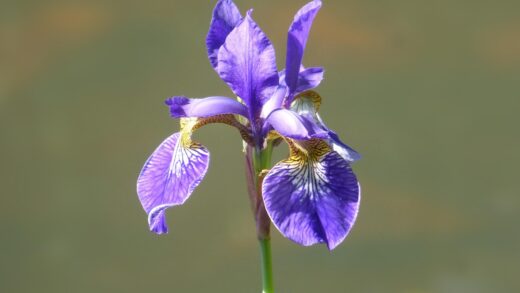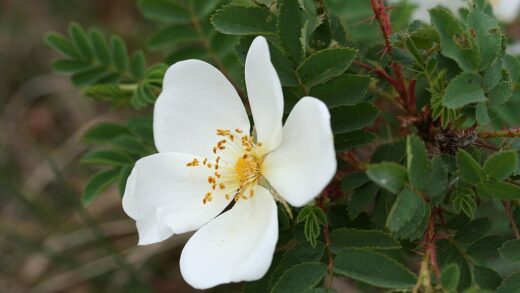Orpine is a plant celebrated for its self-sufficiency and its ability to thrive in conditions that many other perennials would find challenging. This inherent toughness extends to its nutritional needs, which are notably modest. In fact, providing too much fertilizer is a common mistake that can lead to a host of problems, including weak, floppy growth and a diminished floral display. Understanding that orpine performs best in lean soil is the first principle of a successful fertilization strategy, which often involves doing very little at all.
The plant’s natural habitat is often on rocky ledges or in gravelly, nutrient-poor soils. It has adapted to extract the necessary nutrients from these sparse environments, and this adaptation is retained when it is brought into the cultivated garden. Over-fertilizing, especially with high-nitrogen formulas, stimulates the plant to produce lush, soft foliage and long, weak stems. This type of growth is structurally unsound and cannot support the weight of the heavy flower heads, leading to the characteristic flopping that can ruin the plant’s architectural form.
A proper approach to feeding orpine, therefore, is one of restraint. For plants situated in reasonably healthy garden soil, supplemental fertilization is often completely unnecessary. The gradual decomposition of organic matter in the soil, such as fallen leaves, typically provides all the nutrients the plant requires to flourish. The goal is to support strong, sturdy growth that is in character with the plant’s natural habit, not to force artificially rapid development.
If fertilization is deemed necessary due to extremely poor or depleted soil, the timing and type of fertilizer are critical. A single, light application in the early spring as new growth emerges is the most appropriate schedule. This provides a gentle boost of nutrients to support the plant through its main growth phase. It is crucial to select a balanced or low-nitrogen fertilizer to avoid the pitfalls of excessive leafy growth and to instead promote root health and flower production.
Understanding the preference for lean soil
The key to understanding orpine’s nutrient needs lies in recognizing its adaptation to oligotrophic, or nutrient-poor, environments. In its native habitats, the soil is often thin, rocky, and low in organic matter. Plants that evolve in such conditions develop highly efficient root systems capable of scavenging for scarce nutrients. This efficiency means that when they are placed in a typical garden soil, which is comparatively rich, they already have more than enough nutrition to thrive.
Adding fertilizer to an already adequate or rich soil can overwhelm the plant. An excess of nutrients, particularly nitrogen, signals the plant to invest its energy in rapid vegetative growth. This results in large, soft leaves and elongated, pliable stems. While the plant may look lush and green initially, this growth is weak and lacks the structural rigidity to remain upright. Come late summer, when the heavy flower heads begin to develop, these weak stems will inevitably bend, break, and flop over, creating an untidy and disappointing display.
Furthermore, this soft, succulent growth produced by over-fertilization is much more attractive to sap-sucking pests like aphids. The cell walls are thinner and easier for the insects’ mouthparts to penetrate, and the sap is often richer in nitrogenous compounds that they find appealing. The plant is also more susceptible to certain fungal diseases when it is growing too quickly and its tissues are not properly hardened. Therefore, maintaining a lean soil environment is a crucial aspect of integrated pest and disease management for orpine.
To create the ideal lean soil condition, one should focus on soil structure rather than enrichment. The primary goal is to ensure excellent drainage by incorporating materials like grit, coarse sand, or pea gravel. While amending with a small amount of compost at planting time is beneficial for establishing the plant, one should avoid annually top-dressing with rich compost or manure as is common practice for many other perennials. This restrained approach respects the plant’s nature and is the foundation for cultivating a healthy, strong, and beautiful specimen.
When and how to fertilize
For the majority of garden situations, established orpine plants will not require any supplemental fertilizer. The slow breakdown of organic matter already present in the soil will typically provide a sufficient supply of nutrients. However, there are a few specific circumstances where a light feeding might be beneficial. These include plants growing in very sandy soil with rapid nutrient leaching, container-grown plants with a limited soil volume, or older clumps that have begun to show signs of reduced vigor and smaller flower heads.
If you determine that fertilization is necessary, the timing of the application is paramount. The best and only time to feed orpine is in the early spring, just as the new rosettes of foliage are emerging from the ground. Fertilizing at this stage provides nutrients for the entire growing season, supporting the development of strong stems and abundant flowers. Avoid fertilizing later in the season, especially in the autumn, as this can encourage a late flush of tender growth that may be damaged by early frosts and can interfere with the plant’s preparation for winter dormancy.
The choice of fertilizer is equally important. A balanced, slow-release granular fertilizer is the ideal option. Look for a formula where the N-P-K (Nitrogen-Phosphorus-Potassium) numbers are relatively equal, such as a 10-10-10, or one that is lower in nitrogen, such as a 5-10-10. High-nitrogen fertilizers, like those formulated for lawns, should be strictly avoided. The application rate should be conservative; it is always better to apply too little than too much. Follow the package instructions for perennials and consider using half the recommended amount.
An excellent organic alternative to synthetic fertilizers is a thin top-dressing of well-rotted compost or leaf mold applied in the spring. A layer of about half an inch spread around the base of the plant is sufficient. This not only provides a slow and gentle release of a wide spectrum of nutrients but also helps to improve soil structure over time. This method is often the safest and most effective way to provide a little nutritional support without the risk of over-fertilizing.
Fertilizing container-grown orpine
Orpine grown in containers has slightly different nutritional requirements compared to its garden-grown counterparts. The potting medium in a container has a limited volume and can become depleted of nutrients over time due to regular watering, which leaches them out of the soil. While orpine still prefers lean conditions even in a pot, it will likely need some supplemental feeding to remain vigorous and productive throughout the season, as it cannot extend its roots to find nutrients elsewhere.
The fertilization schedule for container-grown orpine should still be conservative. A good approach is to incorporate a slow-release, balanced granular fertilizer into the potting mix at the time of planting. This will provide a steady, low-level supply of nutrients for several months. Alternatively, you can begin feeding in the spring once active growth is underway, using a liquid fertilizer formulated for succulents or cacti, or a balanced all-purpose fertilizer diluted to half or even quarter strength.
The frequency of liquid feeding should be infrequent. Applying a diluted fertilizer solution once every four to six weeks during the spring and summer growing season is typically more than sufficient. It is crucial to stop all fertilizing by late summer. This allows the plant to slow its growth and harden off in preparation for winter dormancy. Continuing to feed into the autumn can disrupt this natural cycle and reduce the plant’s winter hardiness.
When watering container plants, it is a good practice to occasionally water thoroughly until it runs out of the drainage holes. This helps to flush out any accumulated fertilizer salts that can build up in the potting medium and potentially damage the roots. Always ensure the potting mix is allowed to dry out significantly between waterings, as the risk of overwatering and root rot is even higher in the confined environment of a pot. Proper watering is just as important as a restrained fertilization plan for container success.
Signs of nutrient imbalance
While orpine is generally trouble-free, it can occasionally display symptoms that indicate a nutrient imbalance, either a deficiency or an excess. A common sign of nitrogen deficiency, particularly in very poor soils, is stunted growth and pale, yellowish-green leaves (a condition known as chlorosis), especially on the older, lower foliage. The plant may also produce fewer or smaller flower heads. If these symptoms appear, a single application of a balanced fertilizer in the spring should be sufficient to correct the issue.
Conversely, the signs of over-fertilization are more common and often more damaging. The most obvious symptom is weak, leggy, or floppy growth. The stems will be elongated and unable to support the plant’s weight, leading to a sprawling, untidy appearance. The foliage may be an unusually dark green and overly lush. While the plant may appear to be growing vigorously, this growth is structurally weak and more susceptible to pests, diseases, and physical damage from wind or rain.
Another potential issue, though less common, is a phosphorus deficiency. Phosphorus is essential for root development and flower production. A plant lacking in phosphorus may exhibit stunted growth and a purplish tinge to its leaves. More significantly, it may fail to produce flower buds or the flowers may be small and sparse. Using a fertilizer with a slightly higher middle number (P), such as a 5-10-5, can help to remedy this situation if a deficiency is suspected.
It is important to distinguish nutrient-related symptoms from those caused by other cultural problems. For example, yellowing leaves can also be a primary sign of overwatering and root rot, which is a far more common problem. Leggy growth is most often caused by insufficient sunlight rather than excess nitrogen. Before reaching for fertilizer, it is crucial to first assess the plant’s fundamental growing conditions—sunlight, drainage, and watering—as correcting these issues is usually the proper solution.







